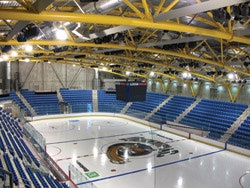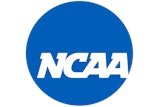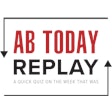Computer modeling is a useful tool in helping architects and building owners ensure sound quality in their new and renovated spaces.

The Green Monster is not only green, it's a particular shade of green that can be compared to the grass below it, or to any other natural or manufactured objects. It's not only tall, but its height can be estimated - eyeballed, that is, and guessed at. It's painted and, what's more, the paint has a flat finish. Its surface carries a certain texture - hundreds of slight indentations from decades of line drives - and has distinguishing features, such as a large manual scoreboard and a ladder in fair territory that was once used for retrieving balls from the screen that used to stand up on top. You could go on and on.
Describing the ballpark's sound, however, is not so easy. There's the roar of the crowd, of course, but your ear can't break it down into distinct voices, or a range of frequencies. Your ear can't go deeper into the sound.
But a computer can - and frequently does. Acoustical consulting firms utilizing auralization software can build a virtual space with the exact dimensions of the arena, natatorium, ice rink, lobby or stadium you're constructing or renovating, and help place loudspeakers or acoustical panels, or select finishes within the space, to ensure it sounds as it should.
Consultants say that although clients tend to assume the auralizations they have paid for will exactly reproduce what a space will sound like, sound quality remains elusive - and subjective. Ioana Pieleanu, an acoustics consultant with Cambridge, Mass.-based Acentech Inc., compares hearing with taste, another sense that is highly dependent on the individual's receptors.
"Can you remember a certain flavor?" Pieleanu says. "If you eat something with cinnamon today, and you eat it again in two weeks, you will remember it, but maybe not the precise flavor. There is more place for error, I would say, than with visuals. It's the same with sound. Auralization software allows us to make a relative comparison, which in this kind of loose ballpark of being able to remember things is actually pretty accurate."
Jack Wrightson, a principal with Dallas-based Wrightson, Johnson, Haddon and Williams, which in 1991 was the first consulting firm to perform an auralization on a sports building, says clients' expectations must typically be tempered before they give their auralization a listen.
"An auralization is somewhat like a rendering," Wrightson says. "Very few renderings are so perfect that you're tricked into thinking you're looking at a photograph of a building. The acoustical data we build auralizations from, the math that models it, is imperfect; everything's an approximation. That having been said, it's an excellent tool, the way renderings are, of giving people an idea of what the space will be like. It won't let them know exactly what they're going to get, but it will approximate the nature of the sound quality, and it's especially valuable in letting building owners evaluate different acoustical options."
Auralizations predate computers, but they were difficult and very costly to accomplish. Associated with the highest-end concert halls, these projects involved building scaled, three-dimensional replicas of the hall, putting a sound source into the model (the frequency of the sound in such cases has to be scaled to match the dimensions of the model) and tape-recording the result.
The modern method allows the virtual space to be constructed straight from the architect's CAD drawings or built manually using drawings or measurements of an existing space. Precision is vital, as a mistake in the placement or angle of any wall or obstruction will affect the interplay of the peaks and troughs of sound waves reverberating through the space. Typically, a sound source is selected - in a theater it would be a spot at stage left, center or right - as well as the location of the "receiver" (as a techie refers to a listener). Pieleanu says that in cases in which an existing space is measured and recordings are made, the sound source is typically a popping balloon (in the age of lax security, it was often a round from a starter's pistol), with the resulting "acoustical fingerprint" serving as a basis for comparison with the computer-generated auralization. Such sounds are omnidirectional, with sound waves spreading outward in the way that sound leaves a dodecahedral loudspeaker or loudspeaker cluster; to measure directional sound, an impulse can be recorded and measured as it is played through one loudspeaker aimed at the preselected listener.

This simple wireframe is the visual representation of an auralization performed prior to the construction of Quinnipiac University's TD Banknorth Sports Center.
"Sound is either reflected or absorbed when it hits a surface, but it's more complicated than that," says Wrightson. "If it's a flat, smooth surface, it might reflect just like a mirror, but if a surface has any articulation at all, it scatters the sound. Same thing with absorption; it's not like absorptive surfaces are an open window and the sound just goes out and doesn't come back. Most absorption occurs with different efficiency at different frequencies, meaning that such a surface tends to absorb more at high frequencies and less at lower frequencies. So, some of the sound does get reflected."
Nor are many surfaces consistent in their properties across even one piece of material. For example, perforated metal decking, which is used to lessen echo in long-span spaces such as arenas, features slots in which some of the sound waves get "trapped" instead of reflecting back into the room - but these slots only appear on one-third of each panel's surface. Unlike in the lab, a real-world application of these panels is likely to include sound waves bouncing off trusses or other structural members before reaching the perforations, not to mention ample areas of slot-free seams.
"That's sort of the level of sophistication at this point in time," Wrightson says. "Auralization is not going to make a big leap forward in realism until we have all the data from all building materials, and the software adapts to take on this more comprehensive data."
Auralization's big leap forward to date is in the computing power now available to run all the variables associated with the program. A ray of sound is measured as it moves from the source, strikes a surface and reflects at a particular angle and continues moving through the space, surface by surface, losing some of its strength as a percentage is absorbed. How long it reverberates is another variable; Pieleanu notes that the default is the time it takes for the sound to decay from 60 decibels until it's inaudible. This, too, can vary. "The sound bounces around, and in an arena or a church it can bounce around for eight or even more seconds, if you have all hard surfaces," she says, likening the action to a billiard ball rolling around a table, with each bumper absorbing some of the ball's energy until the ball stops rolling.

When the TD Banknorth Sports Center opened, it featured a perforated acoustical deck suggested by an auralization.
And, amazingly, the complications don't end there, as it is not at all unusual for consulting firms to run multiple auralizations on the same project, particularly projects (such as arenas) where both room acoustics and sound system intelligibility are an issue. David Bateman, an Acentech senior consultant who designs audiovisual systems, explains that models run by Pieleanu and the other acoustics specialists perform a different function for the building owner and the design architect than the models his staff puts together.
"The reason we run two different models is that they're looking at the way sound reacts within the space, whereas we come into the space once the sound has been controlled and think about how we can focus sound into the listener's seat," Bateman says. "A good auralization program gives us the ability to put in specific clusters of loudspeakers, or different loudspeaker components individually, and see how those react within the acoustic environment." An auralization is an especially useful tool, he adds, in situations in which the budget has placed limitations on the quality or number of loudspeakers.
Occasionally, two similar auralizations are performed at different times during the design process. A good example occurred during the design of the TD Banknorth Sports Center at Quinnipiac University. Prior to Bateman's work on the building's sound system, Pieleanu's crew performed an auralization to test the sound-attenuating characteristics of a perforated acoustical deck when compared to the generic solid metal deck that was being considered as part of value engineering.
| Hear the acoustics with a solid ceiling: Get the Flash Player to see this player.
|
Hear the acoustics with the perforated acoustical deck added: Get the Flash Player to see this player.
|
Once the AV department gets involved, there are competing interests at play, and these are not always easily reconciled.
"Typically, the owner of a spectator venue will want crowd noise, but want it controlled," Bateman says. "Restaurants are kind of like that on a much smaller scale; you want some ambient noise so it sounds a little busy, but you want to be able to hear people sitting across the table from you." In such circumstances, ambient noise can be recorded and added to the program using a graphic equalizer, Bateman notes, allowing the software to weigh a frequency graph of the ambient sound against the data you've added on the loudspeaker system.
"Hockey arenas are notorious for bad sound, because it's all hard surfaces," Bateman adds. "But with the software, we can focus our sound where it needs to go, and make sure listeners can hear it."
Another of auralization's leaps forward - or is it? - has been the circumstances under which clients can experience one. Technological advances and the ubiquity of laptops and mp3 players put auralizations at clients' fingertips.
Many acoustics professionals prefer preserving the sound quality that a studio offers, but most clients these days feel that since they've paid for the data, they should be sent a CD for their listening pleasure. Acoustics consultants are happy to provide them with copies, but they do send them with caveats attached - listen using (preferably, high-quality) headphones, listen at a particular output, and so on.
"What we find when we deal with building owners is that they say, 'Put it on a CD and I'll listen in my car,' " Wrightson says. "Others listen with 10 people in a conference room. We find we can't always control the presentation circumstances. You're probably better off playing it in your car than on your laptop."
Ultimately, though, the venue used when experiencing an auralization is not as important as the relative differences in sound quality noted by listeners.
"Auralizations help clients make an informed decision during the design process and let them know what they are spending their money on," Pieleanu says. "For most of them, it can be enlightening."




































